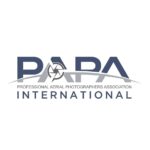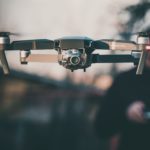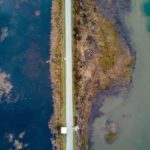Aerial photographers skilled at piloting drones can produce absolutely stunning high-definition images and videos that earn top dollar from clients.
Part pilot, part photographer, these professionals learn the aeronautical skills necessary to fly a drone safely while recording aerial video and digital images.
Startup costs are similar to those of other photography specialties, although licensing and insurance fees will add to the expense of becoming an aerial /drone photographer.
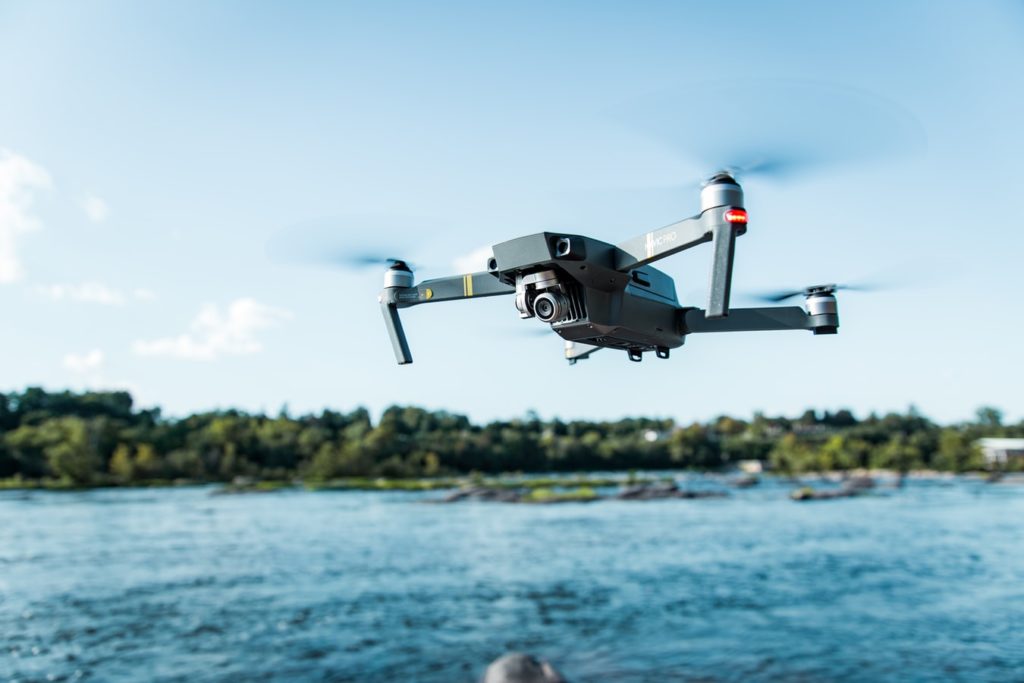
As a licensed drone pilot you can offer aerial photography through your own business or work for a company that provides these drone services. Working independently you stand to make more money, although all the costs of marketing and running a business – as well as finding clients – also fall on your shoulders.
The work itself is undeniably exciting as you photograph or shoot video from an aircraft under your control. The latest drones operate remotely through an app on a computer tablet. Many drone models allow you to see on the tablet what the drone is recording with an onboard camera far overhead, so you’ll know at the shooting location whether you’ve captured all the coverage you need. No more heading home and loading the drone’s memory card into your computer only to discover key shots did not turn out well – or at all.
Beyond the thrill of flight, drone photography also taps into your artistic creativity as you edit images and videos in post-production on a laptop or computer before delivery to the client.
If high-tech flying excitement combined with a photographer’s eye for capturing beauty sounds appealing, read on to learn how you can become an aerial / drone photographer and make a good living.
In this article you’ll learn:
- How much money you can make as an aerial/drone photographer
- The required training and certifications
- Professional groups to join
- Employment opportunities for aerial/drone photographers
- Finding clients
- Plus helpful tips
How much money can you make?
Aerial/Drone Photographers on average make $43,930 per year, according to a recent salary survey of job openings by ZipRecruiter. Pros on the high end of the pay scale are making more than $81,500 a year. Experience and skill produce great work samples, which can largely determine how much an aerial/drone photographer can charge. A motivated drone photographer with a portfolio of quality work should have no trouble earning $100,000 a year and up.
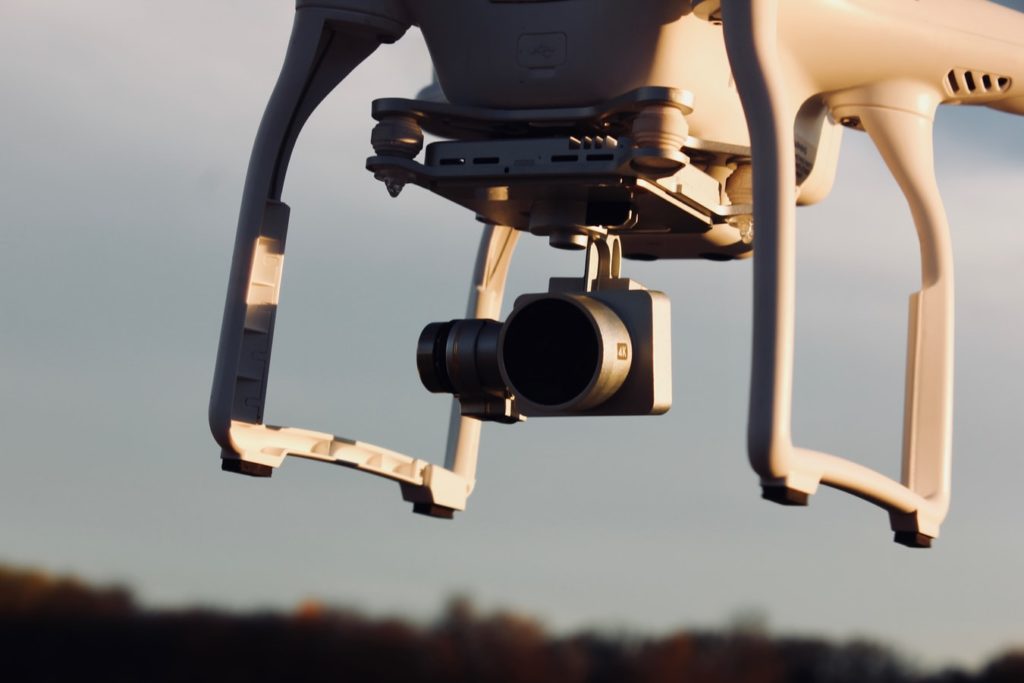
The average range for a single aerial photography shoot is $250 – $350 for about an hour of actual shooting on location. Keep in mind that there is post-production work to factor into the equation. This includes editing images in Photoshop or similar imaging software, or editing digital video and possibly adding a soundtrack with narration, depending on the client’s requirements.
Training and Certification
You do not need a license or certification to be a photographer. You will absolutely need a license through the Federal Aviation Administration to fly a drone for any commercial purpose, which includes photography and videography in exchange for money.

To be eligible for licensing as a pilot under the FAA’s small unmanned aircraft rule you must:
- Be at least 16 years old
- Be able to read, speak, write, and understand English
- Be in a physical and mental condition to safely fly a drone
- Pass the initial aeronautical knowledge exam
The process of becoming a licensed drone pilot is not terribly complex but it is lengthy. As you might expect, much of the focus is on flight safety. The full requirements and regulations can be reviewed here. The license itself costs $150 and renews every two years.
The good news is, during the process of becoming licensed commercially to fly a drone, you’ll also become skilled as a pilot. The only way anyone ever learned how to fly a drone safely is by practicing flying a drone.
Before you get started, come to terms with the fact that most people crash a drone at least once while learning to pilot these aircraft. All it takes is one serious crash to destroy a drone, so consider training on an inexpensive model. Toy drones cost less than $100. Drones with cameras start at about $300. A decent commercial drone with a high definition camera will sell for more than $1,000. Multi-camera drones cost $7,000 and up. As you can see, taking your maiden flight with a drone costing several thousand dollars represents a significant risk. Fly it into a tree, the side of a mountain, a building or straight into the ground and your entire business investment could collapse in a twisted pile of metal and plastic.

Once you have your pilot’s license to fly drones commercially, you can consider training in aerial photography. Many courses are available for download on the Internet for less than $100. Depending on where you live, seasoned drone pilots may offer in-person training where you can develop your aerial photography skills under the mentorship of an experienced drone photographer. An Internet search will turn up these instructors. You can also call around to local camera shops asking about classes. Here is an example of an online drone photography course.
In addition, you’ll want to learn the fundamental tools of Photoshop or similar image-editing software, as well as editing digital videos. Once you’ve learned how to edit video, you’ll be able to add music, narration and effects to create cinematic productions that will thrill your clients.
Professional Groups to Join
The Professional Aerial Photographers Association International is the premiere organization for pro photographers in this field. Annual membership is $195. Benefits include regional conferences and educational opportunities, networking with other pros in the field, newsletters and a listing of your business on the association’s website. This helps potential clients find you.
Professional Photographers of America is the best-known organization of photography pros in the United States. A full membership is open to anyone living in the United States or its territories and costs $323 per year. Benefits include:
- $15,000 equipment insurance policy
- Data loss protection
- Access to all online education course
- Online referral database listing
- Printed and digital monthly issues of Professional Photographer magazine
- One full registration to Imaging USA during the first year of membership
- Business Resources
- Contracts and Copyright Resources
- Access to Member Discount Program
- Weekly newsletter

Many aerial photographers work in real estate photography. If this is one of your lines of business, consider joining The Association of Real Estate Photographers. This is an advocacy organization for the industry. Membership costs $185 per year and comes with these benefits:
- Certification with the Association
- Use of AREP Logo on your website and print collateral
- Association-approved License for use with Agents/Brokers – downloadable
- Access to Legal Counsel
- Discounts on the National Conference
- Assistance with licensing disputes
- Relationship with your MLS (multiple listing service used by realtors). Work through the association for any issues with Agent/Broker/MLS image use
- Member listing in Association directory and individual member page for marketing
Employment
Aerial/ drone photographers are in demand. From sporting events to real estate, civil engineering to architecture, you’ll find clients in need of a skilled drone pilot who can deliver crisp images in high definition.

If you plan to market to realtors, concentrate on agents and firms that specialize in the sale of land, farms and estates. These properties can be shown to great advantage with aerial photography so prospective buyers can see the size, shape and terrain.
Visit local realtor offices to drop off your marketing materials, brochures and business cards. Follow up with a phone call in a day or two. If a realtor says she’s already working with a photographer, ask if she knows any realtors who need your services. Don’t be discouraged by rejection when calling realtors. The very next call you make could be gold.
Attend local gatherings of real estate agents (they get together a lot to talk shop) so you can introduce yourself and distribute business cards. Bring along a laptop loaded with your best aerial images and videos to set up a quick live presentation and impress new clients.
Use the networking power of your professional memberships to find jobs.
Contact the athletic departments of local colleges, universities and high schools, offering your services.
Call engineering firms, land surveying companies and architects. Offer to send a copy of your portfolio.
Finding Clients
Business cards and a basic website should be the core of your marketing toolkit. The website doesn’t need to be expensive, just attractively designed, with photos and videos of your best drone work, location and contact information. No need to include your pricing unless you know that your fees are less than what competitors are asking.
In addition to your business website, create an Instagram account to showcase your aerial photography services. Instagram is the #1 online venue for creative professionals to display their work.
Other strategies for attracting new business:
- Create a referral program with discounts for returning customers who bring new clients to you.
- Ask clients to review your services online. According to a recent survey, 90% of people say their buying decisions are influenced by positive online reviews.
Good to know
Currently there are no federal requirements for insurance on a drone pilot. That could change at any time. Regardless, get liability coverage, anyway. As a small business owner, liability insurance protects you if your drone causes an accident in which someone is hurt or property damage is involved. And insuring the drone itself means that if you do crash and destroy the aircraft, you won’t need to come up with a thousand dollars or potentially much more to replace your equipment so you can stay in business. A policy that costs about $750 a year may provide up to $1 million in liability coverage. Here is a guide to commercial drone insurance coverage.
If you enjoyed this article, check out some more great PocketSuite.io content that can help you grow your career as an aerial/ drone photographer. Here’s a great place to start.PocketSuite has thousands of business owners who all started where you are right now. Our community is always happy to help you ramp up, grow your client base, and achieve your income goals, both within the PocketSuite app and as part of our exclusive Facebook Community Group. PocketSuite’s vision is for any professional to be able to work for themselves and make a great living. It starts here. It starts with you. It starts today. Let’s get started, download PocketSuite now! Feel free to reach out with any questions (we’d love to hear from you)! Text us @ (415) 841-2300.
